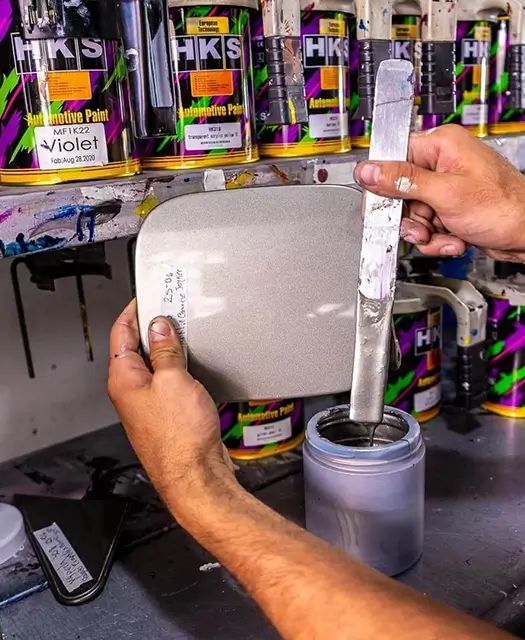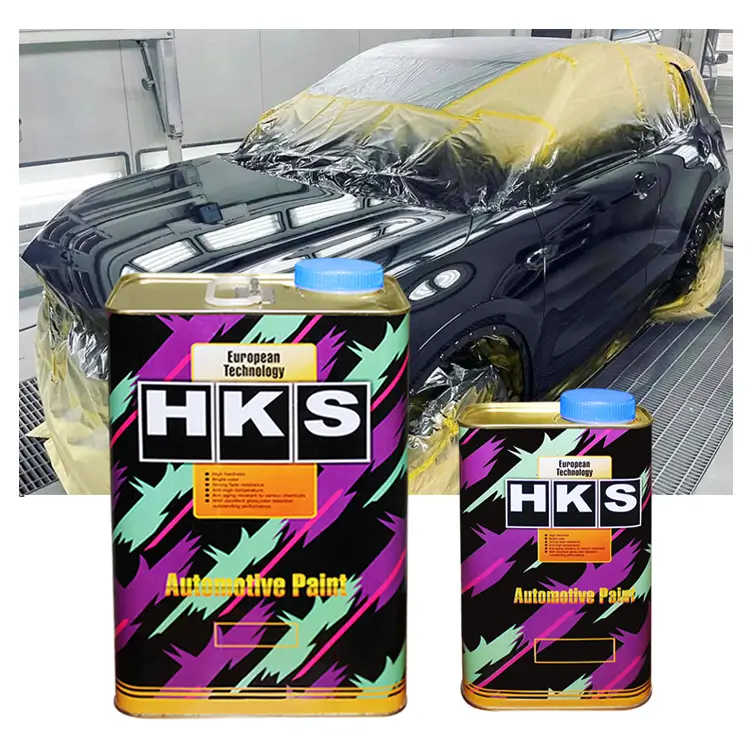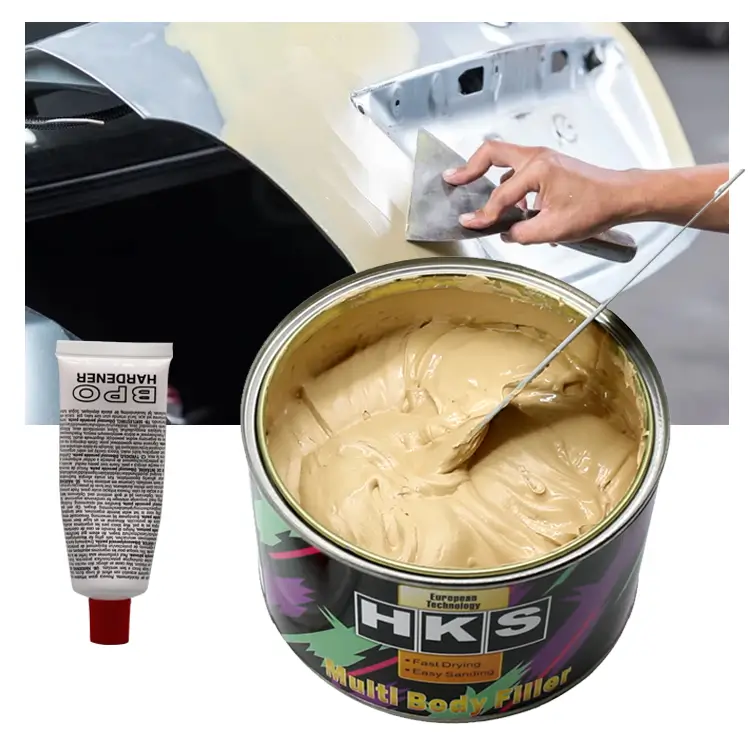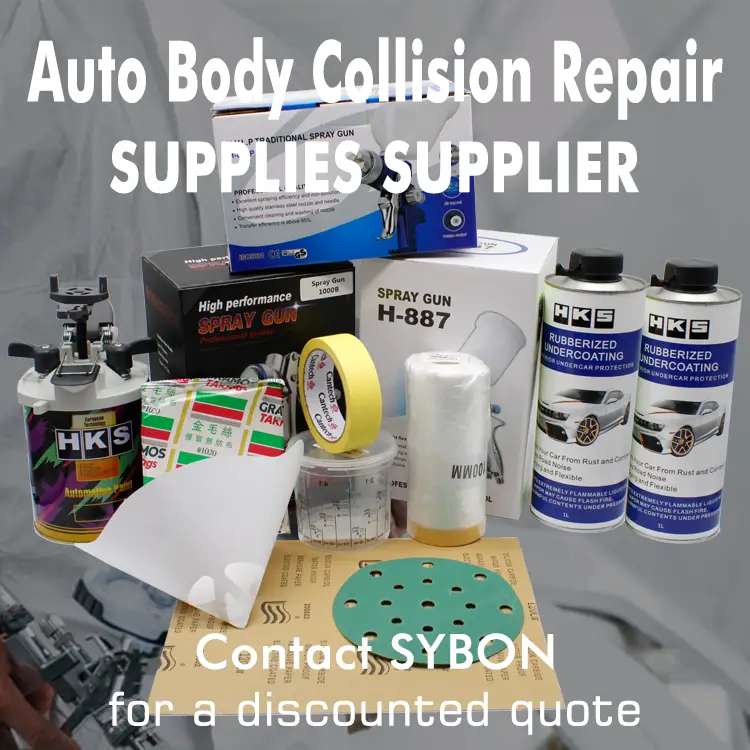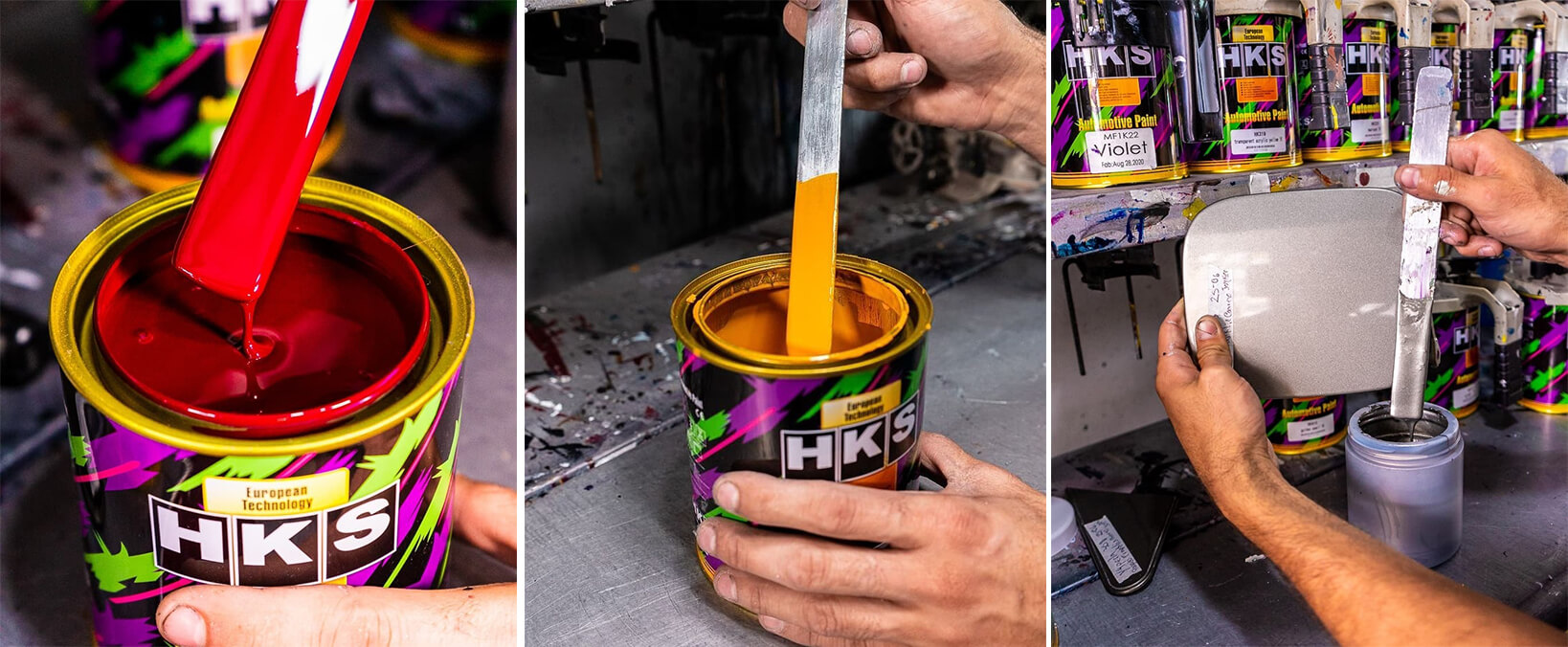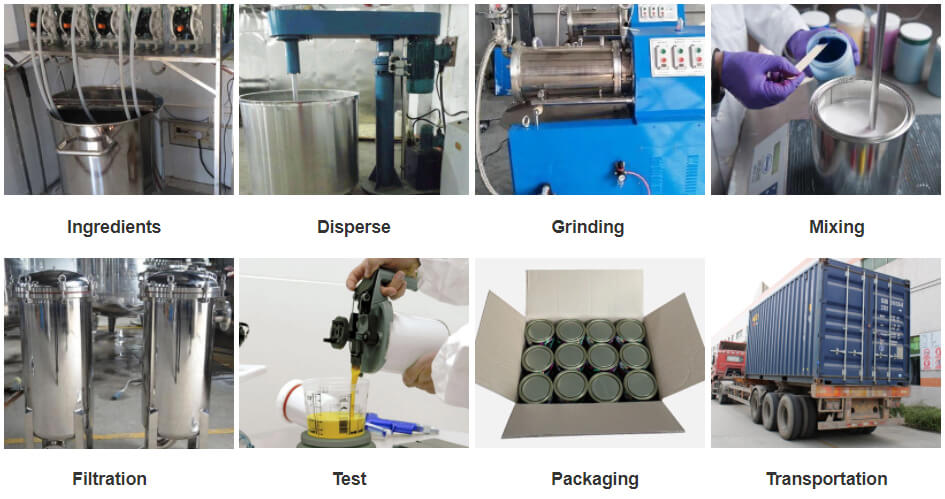The automotive industry is one of the largest and most important industries in the world. Millions of people rely on vehicles for transportation, making it crucial that these vehicles are safe, reliable, and aesthetically pleasing. One of the key factors in achieving an appealing appearance is the paint used on the vehicle. Automotive paint serves not only to enhance the vehicle's aesthetic appeal but also to protect the vehicle's body from environmental damage.
This article will discuss the automobile paint production process, from its raw materials to its application on a vehicle.
1.Raw Materials
Automotive paint production requires various raw materials, each of which has a specific function. The primary components of automotive paint are pigments, binders, solvents, and additives. Pigments give the paint its color and opacity, while binders hold the pigment particles together and provide adhesion to the vehicle's surface. Solvents are used to dissolve the binders and pigments and allow the paint to be applied in a liquid form. Additives are used to modify the paint's properties, such as its viscosity, drying time, and resistance to fading and scratching.
2.Pigments
Pigments are the key component of automotive paint that gives it its color and opacity. Pigments are finely ground particles that are suspended in the paint's binder. They come in various forms, including organic and inorganic pigments, metallic pigments, and pearlescent pigments.
Organic pigments are made from carbon-based molecules and are used to produce bright, vivid colors. They are often used in high-end automotive finishes, such as those found on luxury vehicles.
Inorganic pigments are made from minerals and are used to produce more muted colors. They are often used in lower-end automotive finishes.
Metallic pigments are made from small flakes of metal, such as aluminum, and are used to create a metallic sheen in the paint.
Pearlescent pigments are made from mica particles and are used to create a pearly, iridescent effect in the paint.
3.Binders
Binders are the components of automotive paint that hold the pigment particles together and provide adhesion to the vehicle's surface. There are two primary types of binders used in automotive paint: thermoplastic and thermosetting binders.
Thermoplastic binders are made from polymers that can be melted and reformed multiple times. They are commonly used in lower-end automotive finishes.
Thermosetting binders are made from polymers that irreversibly crosslink when heated. This crosslinking creates a rigid, durable film that is resistant to damage from environmental factors such as UV light, moisture, and temperature fluctuations. Thermosetting binders are used in high-end automotive finishes, such as those found on luxury vehicles.
4.Solvents
Solvents are used in automotive paint production to dissolve the binders and pigments and allow the paint to be applied in a liquid form. There are several types of solvents used in automotive paint production, including water, hydrocarbons, and oxygenated solvents.
Water-based solvents are used in environmentally friendly automotive paint formulations. They are typically used in lower-end automotive finishes and are less durable than solvent-based formulations.
Solvent-based formulations use hydrocarbons and oxygenated solvents to dissolve the binders and pigments. These formulations are more durable than water-based formulations and are commonly used in high-end automotive finishes.
5.Additives
Additives are used in automotive paint production to modify the paint's properties, such as its viscosity, drying time, and resistance to fading and scratching. There are many types of additives used in automotive paint production, including anti-settling agents, leveling agents, defoamers, and UV stabilizers.
Anti-settling agents are used to prevent pigment particles from settling to
the bottom of the paint can during storage and transportation.
Leveling agents are used to improve the paint's ability to spread evenly over the vehicle's surface, reducing the appearance of brush marks and other imperfections.
Defoamers are used to prevent the formation of bubbles in the paint during application, ensuring a smooth, even finish.
UV stabilizers are used to protect the paint from damage caused by exposure to UV light, which can cause fading and discoloration over time.
Automobile Paint Production Process Manufacturing Process
The manufacturing process for automotive paint involves several steps, including mixing, milling, tinting, and filtering.
1.Mixing
The first step in the manufacturing process is mixing the raw materials together. Pigments, binders, and solvents are added to a mixing vessel and stirred until they are well blended. The mixture is then transferred to a milling machine.
2.Milling
The milling machine grinds the pigment particles into smaller particles, which are then mixed with the binder and solvent. The milling process is essential to ensure that the pigment particles are evenly dispersed throughout the paint, resulting in a consistent color and finish.
3.Tinting
Once the paint is milled, it is tested to ensure that it meets the desired color and consistency. If adjustments are needed, tinting agents are added to the paint to achieve the desired shade.
4.Filtering
The final step in the manufacturing process is filtering the paint. The paint is passed through a filter to remove any impurities or contaminants that may have been introduced during the mixing and milling process.
Application
After the paint is manufactured, it is ready for application to the vehicle. Automotive paint can be applied using several methods, including spray guns, paint brushes, and rollers.
Spray Guns
Spray guns are the most common method for applying automotive paint. The paint is loaded into a spray gun, which uses compressed air to atomize the paint into tiny droplets. The droplets are then sprayed onto the vehicle's surface, creating a thin, even coat of paint.
Paint Brushes and Rollers
Paint brushes and rollers are less common methods for applying automotive paint, but they can be useful for touch-up work or small areas that are difficult to reach with a spray gun. Brushes and rollers can also be used for applying clear coats and other finishes.
Conclusion
The production of automotive paint is a complex and highly technical process that involves a wide range of raw materials and manufacturing techniques. From pigments and binders to solvents and additives, every component plays a crucial role in the final product's appearance, durability, and performance. With advances in technology and materials science, automotive paint continues to evolve, providing vehicle owners with a wide range of options for achieving the perfect finish. Whether you're a professional auto body shop or a DIY enthusiast, understanding the automotive paint production process is essential for achieving a high-quality, long-lasting finish.
Source of this article:https://www.supersybon.com
Get to know us through more channels:Facebook, Tiktok, Instagram, youtube.

